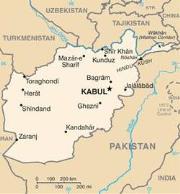Protecting Online Identity
Kabul NEO >
Info > Online Identity
Listed below are some resources that Afghans who are at-risk in
Afghanistan can use to protect their online identity from being
discovered by the Taliban.
APPS. The Ministry of Defense
(MoD) and Ministry of Interior (MoI) both maintained a biometrics
database that recorded fingerprints, iris scans, facial images, and
other data of the members of the Afghan National Defense and Security
Forces (ANDSF). The
Afghan Personnel and Pay System (APPS) was used by the MoD and MoI
to pay the Afghan National Army (ANA) and Afghan National Police
(ANP). APPS was instituted in 2016 to
cut down on paycheck fraud and gain a true picture of the personnel
strength of the ANDSF. Each profile contains 40 data points. Although
the United States worked hard to
introduce these biometric pay systems to eliminate corruption among
the officers of the ANDSF it was a
difficult endeavor. The ANDSF leadership, if it fully instituated
the biometrics pay system, would simply lose too much money through the
elimination of their corrupt pay practices.
AABIS. In 2009 the Ministry of
Interior began a program to biometrically register all MoI and Afghan
National Police in the
Afghan Automatic Biometric Identification System (AABIS). This was a
Ministry of Interior database used by the MoI's Biometrics Center. It
was designed to enroll members of the Afghan population in general - not
limited to the ANDSF. It is estimated that it contains at least 8
million records. The data collected included fingerprints, palm scans,
iris scans, and facial imagery recognition. It is
reported that biometric data of Afghan National Army recruits were
also integrated into AABIS. (link no longer active).
E-Tazkira. The country's
electronic national ID card system utilized a biometric database as
well. The Afghan National Statistics and Information Authority
(www.nsia.gov.af) had about 6 million records. The World Bank provided
funding for the e-Tazkira. This database included biometric data as well
as
information about ethnicity and religious belief.
HIIDE. The U.S. military's
Handheld Interagency Identity Detection Equipment (HIIDE) was used to
crate watchlists of foes and local allies in Afghanistan. Many pieces of
the HIIDE equipment in used by the ANDSF were seized by the Taliban.
Resources on Protecting Online Identity
Access Now
https://www.accessnow.org/online-safety-resources-afghanistan/
Online safety resources for Afghanistan's human rights defenders.
Human Rights First
How to Delete Your Digital History, July 2020, PDF, 4 pages
Team America Relief
Recommendation: Digital Security
Some useful apps for communications if cell towers do not work -
F-Droid, Briar, and Bridgefy.
News Reports on Protecting Online Identity
November 29, 2021.
"Afghans Complain of Beatings, Harassment as Taliban Inspects
Smartphones", Gandhara RFE. Taliban fighters are radomly
checking cellphones for photos, videos, contacts, and social media
content that might violate their strict moral code.
October 14, 2021.
"We need to talk about digital ID", Access Now, October 14,
2021. Why the World Bank must recognize the harm in Afghanistan and
beyond in the use of "Big ID" systems.
September 9, 2021.
"Civil society calls on international actors in Afghanistan to secure
digital identity and biometric data immediately", Association
for Progressive Communications (APC). In addition to the biometric
systems used by the Afghan government and U.S. military forces,
non-governmental organizations and humanitarian assistance groups also
utilized biometric devices. In addition, the United Nations High
Commissioner for Refugees (UNHCR) and World Food Programme (WFP) also
used biometrics in its programs.
August 30, 2021.
"This is the real story of the Afghan biometric databases abandoned to
the Taliban", Technology Review. By capturing 40 pieces of
data per person - from iris scans and family links to their favorite
fruit - as system meant to cut fraud in the Afghan security forces may
actually aid the Taliban.
August 27, 2021.
"Urgent call to erase biometric, digital ID databases in Afghanistan",
Biometric Update. Many organizations used biometric systems in
Afghanistan. This included the U.S. military, Afghan government, UN
agencies, World Bank, humanitarian organizations, and private sector
entities
August 23, 2021.
Concerns over Taliban accessing aid agency biometric data,
Biometric Update. The Taliban have access to many different
biometric identity systems that were in use in Afghanistan. These may
now be used for targeting those who were associated with foreign
military forces or with international aid groups.
August 17, 2021.
Steps to Protect Your Online Identity from the Taliban: Digital History
and Evading Biometrics Abuses, Human Rights First (HRF).
The report details how to evade the misuse of biometric data, how to
prepare for internet censorship and shutdowns, thwarting digital
surveillance, and deleting digital history.
August 17, 2021.
"Afghans scramble to delete digital history, evade biometrics",
Reuters. Thousands of Afghans associated with the United States
through their work are now going online and deleting Facebook and other
online social media accounts.They are concerned that the Taliban will
use this information to target and attack them.
August 17, 2021.
"Afghans are racing to erase their online lives", Wired.
Every photo and every data point is a method of the Taliban targeting
Afghans who are at-risk.
|



